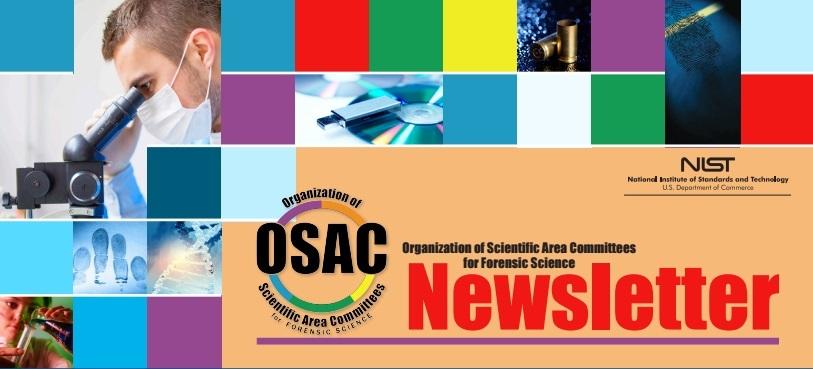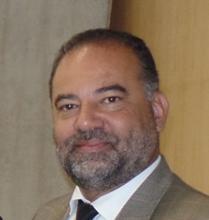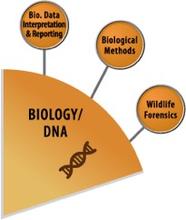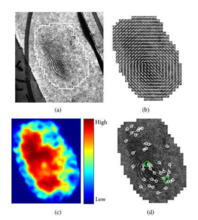OSAC Newsletter, August 2017

August 2017
The Hidden Power of the OSAC | Developments from the Biology/DNA Scientific Area Committee | Message from OSAC Affairs Director: OSAC Updates at the IAI | Standards Developing Organization (SDO) News | Standards Under Consideration for OSAC Registry | NIST Activities
The Hidden Power of the OSAC

Jose Almirall, PhD
Chair of the Chemistry and Instrumental Analysis SAC and FSSB Member
If I had known that my email to the legal resource committee (LRC) chair would end up quoted, verbatim, in a Harvard Law Review article I might have taken a few extra minutes to word it better. The power of the OSAC structure is that any of the 560+ OSAC members (plus the 250+ affiliates) have access to a unique assemblage of experts ranging from discipline-specific forensic science practitioners (and researchers in the state-of-the-art of each of the disciplines) to measurement scientists, statisticians, behavioral scientists and legal experts. Most of the OSAC membership is devoted to pursuing the primary aim: to develop and promote consensus documentary standards that ensure the use of the best science and the best practice of science in forensic casework. Much progress is being made towards the achievement of these goals, even if it is slow-going.
OSAC also provides access to communication channels that were not previously available. Several examples of the awesome power of direct communications have resulted in positive outcomes for the forensic science community, but not all necessarily translate into a consensus documentary standard as the product of the OSAC efforts.
The one example I will share is an email that I sent to the LRC chair (in my then capacity as a member of the Chemistry SAC) requesting clarification on a legal/statistical question that arose as a result of a negative vote on a standard from one of the Chemistry SAC members. The reasoning for the negative vote argued that a legal requirement had to be met by the measurement standard but this argument did not convince some of us on the SAC. The LRC issued an opinion that was later expanded into a commentary published in the Harvard Law Review [1].
I was asked permission by the author of the HLR paper, Prof. David Kaye, to use the original wording in my email, and I agreed. This opinion clarified the question at the heart of the discussion, and the Chemistry SAC was able to move on with their deliberations. The SAC approved the standard, which then moved on to the next steps in the OSAC process. There are many other examples of the power that the community of devoted and passionate members of the OSAC brings to bear on addressing the needs of the forensic science disciplines.
1. D. H Kaye, Hypothesis Testing in Law and Forensic Science: A Memorandum, Forensic Commentary Series, Harvard Law Review, March 10, 2017, 130 Harv. L. Rev. F. 127.
https://harvardlawreview.org/2017/03/hypothesis-testing-in-law-and-forensic-science-a-memorandum/

The Biology/DNA Scientific Area Committee and its subcommittees have selected the AAFS Standards Board (ASB) as the SDO for the majority of the documents developed within those subcommittees. Documents submitted to the ASB from the OSAC undergo the SDO process which includes internal review by the SDO consensus body, a public comment period, and adjudication of those comments by the consensus body. Following these steps, the consensus body will determine whether or not the document will move forward to become a documentary standard that can then be considered by the OSAC units for inclusion on the OSAC registry of approved standards.
Two documents are in ASB public comment period. They are ASB Standard 020, Standards for Validation Studies of DNA Mixtures, and Development and Verification of a Laboratory’s Mixture Interpretation Protocol, First Edition, and ASB Standard 018, Validation Standards for Probabilistic Genotyping Systems.
To learn more about the documents Approved by the OSAC Biology/DNA SAC for submission to the ASB, visit the Biological Methods Subcommittee, Biological Data Interpretation and Reporting Subcommittee, and Wildlife Forensics Subcommittee pages.
Message from OSAC Affairs Director: OSAC Updates at the IAI

Nine OSAC committees provided public updates at the International Association for Identification (IAI’s) 102nd International Forensic Educational Conference, held between August 6-12, 2017.
OSAC presenters (listed below) reported on hundreds of forensic science standards, guidelines, and other documents that are in various stages of analysis, development, or promotion by the OSAC:
- Physics/Pattern Scientific Area Committee (SAC)/Austin Hicklin
- Friction Ridge Subcommittee/Melissa Gische
- Firearms & Toolmarks Subcommittee/Andy Smith
- Bloodstain Pattern Analysis Subcommittee/Toby Wolson
- Footwear & Tire Subcommittee/Matt Johnson
- Digital/Multimedia SAC/Richard Vorder Bruegge
- Digital Evidence Subcommittee/Richard Vorder Bruegge on behalf of the committee
- Facial Identification Subcommittee/Neal Gieselman & Lora Sims
- Video/Imaging Technology and Analysis (VITAL) Subcommittee/Carl Kriigel
The webcasts and PowerPoint presentations are available for public viewing on the NIST OSAC website.
Some common topics addressed by the various briefings and Q&A sessions included:
- A draft standard for expressing source conclusions is currently under development within OSAC.
- Attendees asked what standards they should follow while OSAC standards are under development. OSAC presenters suggested they continue to use the resources available, including the OSAC web postings of discipline-specific baseline documents.
- OSAC is a diverse and balanced organization consisting of forensic science practitioners as well as researchers, judges, and lawyers. The consensus aspect of the OSAC mission is taking time in order to incorporate all of the varied feedback.
“Non-practitioners have been resourceful and have helped to make a better product. At first there was a perception that non-practitioners would be “blockers”, but in the end I think they will make our documents stronger and more scientifically sound.”
– Andy Smith, Chair of OSAC Firearms & Toolmarks Subcommittee
Standards Developing Organization (SDO) News
This section describes SDO activities relevant to OSAC and the forensic science community.
New Work Items Initiated
The following work items are underway:
The American Academy of Forensic Sciences (AAFS) American Standards Board (ASB)
Project Initiation Notification System (PINS) were published on page 16, in ANSI Standards Action on July 14, 2017. This will begin a 30-day period for public comment on the initiation of the ASB’s work on the documents.
BSR/ASB Std 038-201x, Standards for Internal Validation of Forensic
DNA Testing Methods (new standard)
This document details general requirements for performing an internal validation of all forensic DNA testing methods within a forensic DNA laboratory.
BSR/ASB Std 039-201x, Standards for Internal Validation of Human Short Tandem Repeat Profiling on Capillary Electrophoresis Platforms (new standard)
This document details requirements for performing an internal validation of a human short tandem repeat (STR) multiplex kit using capillary electrophoresis (CE).
BSR/ASB Std 040-201x, Standards for Forensic DNA Interpretation and Comparison Protocols (new standard)
This document describes requirements for a laboratory’s DNA interpretation and comparison protocol and provides direction for its development in order to consistently produce reliable, repeatable, and reproducible interpretations and conclusions that are supported by internal validation data.
Project Initiation Notification System (PINS) were published on page 20, in ANSI Standards Action on July 28, 2017. This will begin a 30-day period for public comment on the initiation of the ASB’s work on the documents.
BSR/ASB Std 042-201x, Standard for Disaster Live Human Detection Dogs Programs - Training, Certification, and Documentation (new standard)
To provide a standard for training, certification, and documentation pertaining to canine teams trained to search for live people in disaster environments, including structural collapse.
BSR/ASB Std 043-201x, Standard for Disaster Human Remains Detection Dogs Programs - Training, Certification, and Documentation (new standard)
To provide a standard for training, certification, and documentation pertaining to canine teams trained to search for human remains in disaster environments, including structural collapse.
BSR/ASB Std 046-201x, Wildlife Forensics Validation Standards - New Tests for Validating Short Tandem Repeat (STR) Primers (new standard)
This document provides minimum standards and recommendations for validating new STR (short tandem repeat, nuclear DNA) markers for use against validated wildlife forensic DNA databases.
BSR/ASB Std 047-201x, Wildlife Forensics Validation Standard - Validating New Primers for Sequencing (new standard).
This document provides minimum standards and recommendations for validating new sequencing primers for taxonomic identification and mitochondrial haplotyping in wildlife forensic DNA laboratories where the sequencing (Sanger) method has already been validated. The method of validating the new sequencing primers against a validated database is contained in this standard.
BSR/ASB Std 048-201x, Wildlife Forensic DNA Standard Procedures (new standard)
This standard covers the application of genetic techniques in analyzing wildlife forensic evidence. Also covered are: specific wildlife DNA analyses, such as DNA sequencing for the identification of class characters, DNA fragment analysis of short tandem repeats (STRs) for establishing individual identity, and includes validation of databases for comparison. Of particular concern are phylogeny, taxonomy, and reference collections that are specific to wildlife forensic science.
Revised Standards
ASTM International E30 on Forensic Science
ASTM E1388:2017 - Standard Practice for Static Headspace Sampling of Vapors from Fire Debris Samples has been revised (with title change)
Other Items of Interest
The AAFS Standards Board has re-opened the application period until September 1. Members are being solicited in underrepresented interest categories (click here for a detailed description of the ASB Interest Categories). Current members will retain their positions.
· Anthropology: Consumer Groups and Producers
· Bloodstain Pattern Analysis: Consumer Groups, General Interest, Laboratories and or Testing Facilities, Producers, User/Government, User/Industry
· Disaster Victim Identification: Consumer Groups, General Interest, Laboratories and or Testing Facilities, Producers, User/Industry
· DNA: Academia, Consumer Groups, General Interest, Laboratories and or Testing Facilities, Producers, User/Industry
· Dogs and Sensors: All interest categories
· Firearms and Toolmarks: Consumer Groups, Laboratories and or Testing Facilities, Producers
· Footwear and Tire Tracks: Consumer Groups, General Interest, Laboratories and or Testing Facilities, Producers, User/Industry
· Forensic Document Examination: Academia, Consumer Groups, General Interest, Producers
· Friction Ridge: Consumer Groups, Laboratories and or Testing Facilities, Producers
· Medicolegal Death Investigation: Consumer Groups, General Interest, Laboratories and or Testing Facilities, Producers, User/Industry
· Toxicology: Academia, Consumer Groups, General Interest, Producers, Subject Matter Experts, User/Industry
· Wildlife: Consumer Groups, General Interest, Laboratories and or Testing Facilities, Producers, User/Government, User/Industry
Click here to apply for any of the consensus bodies.
The AAFS Standards Board, an ANSI member and Accredited Standards Developer, has submitted revisions to its currently accredited operating procedures for documenting consensus on AAFS-sponsored American National Standards, under which it was originally accredited in December 2015. As the current revisions appear to be substantive in nature, the reaccreditation process is initiated. Comment Deadline: September 4, 2017
To obtain a copy of the revised procedures or to offer comments, please contact: Dr. Mary McKiel, Communications Liaison Officer, American Academy of Forensic Sciences, 410 North 21st Street, Colorado Springs, CO 80904; phone: 719.636.1100; e-mail: mmckiel [at] aafs.org (mmckiel[at]aafs[dot]org)
. You may view/download a copy of the revisions during the public review period at the following URL: www.ansi.org/accredPR. Please submit any public comments on the revised procedures to AAFS by September 4, 2017, with a copy to the ExSC Recording Secretary in ANSI’s New York Office (jthompso [at] ANSI.org).
Standards Under Consideration for OSAC Registry

The aim of the Organization of Scientific Area Committees for Forensic Science (OSAC) is to identify and promote technically sound, consensus-based, fit-for-purpose documentary standards that are based on sound scientific principles. This will be achieved through the OSAC Registry. A standard that is posted on the Registry demonstrates that the methods it contains have been assessed to be valid by forensic practitioners, academic researchers, measurement scientists, and statisticians through a consensus development process that allows participation and comment from all relevant stakeholders.
Want to know the status of standards documents that are under consideration for the OSAC Registries? Please visit the Standards Under Consideration for the OSAC Registry page.
NIST Activities
Scientists Automate Key Step in Forensic Fingerprint Analysis
New algorithm may make the process more reliable and efficient

This week, scientists from the National Institute of Standards and Technology (NIST) and Michigan State University report that they have developed an algorithm that automates a key step in the fingerprint analysis process. Their research has been published in IEEE Transactions on Information Forensics and Security.

